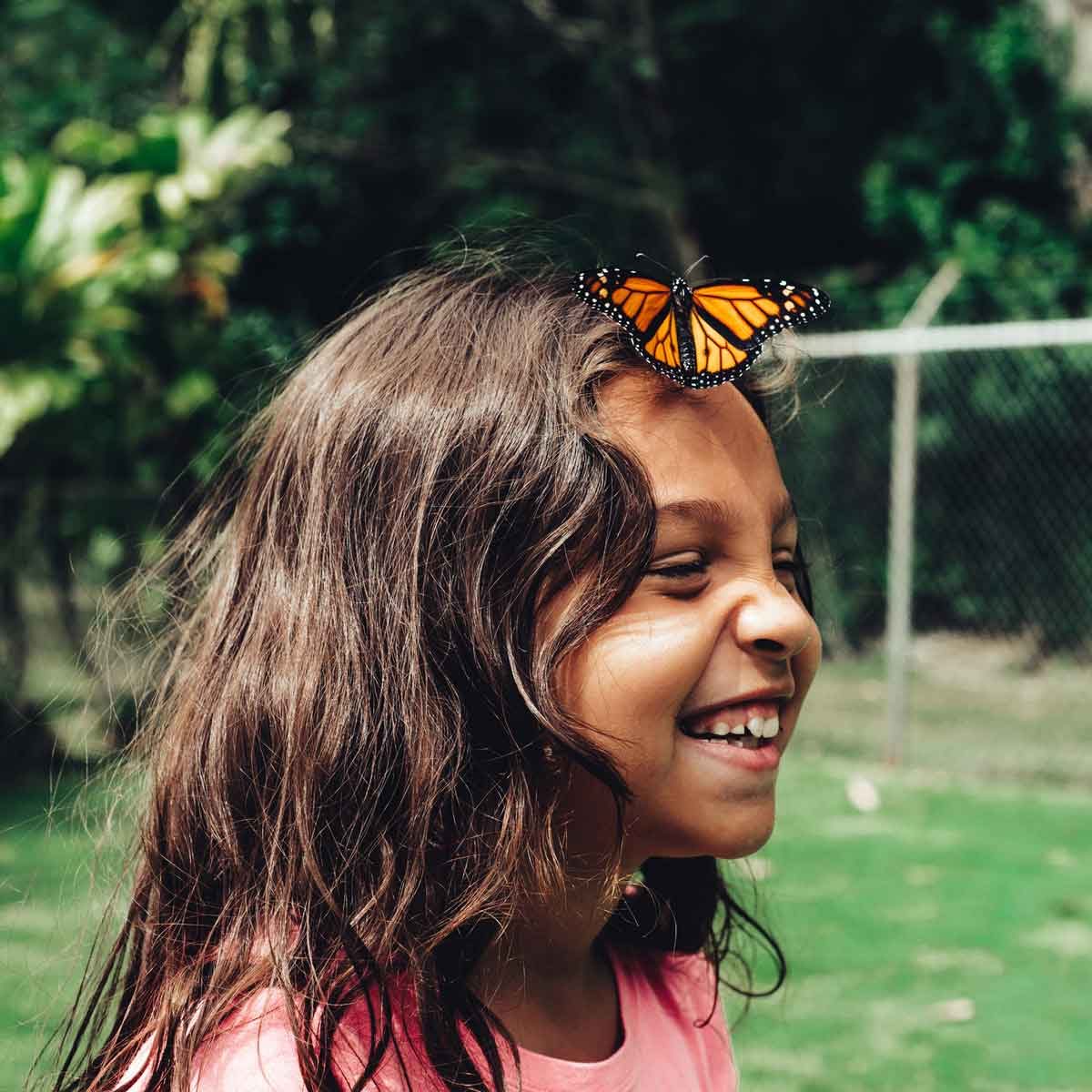Learn all about how to attract butterflies to your yard with these tips from an expert in the gardening world.

7 Ways to Attract Butterflies to Your Backyard

One of the joys of planting flowers is the beautiful visitors they attract. Watching a butterfly gently float by, or a bee gathering pollen creates a peaceful ambiance in your outdoor space. Plus, these beneficial insects actually help your plants thrive. “Planting bee and butterfly-friendly flowers in your landscape and gardens creates a healthy and balanced eco-system in your own backyard,” says garden expert Tammy Sons. If you want to attract butterflies to your yard, you need to make them feel at home. Here are seven tips for creating a garden that appeals to these winged wonders.
On This Page
Plant a Wide Variety of Flowers
Butterflies like flowers, especially yellow and purple varieties with simple open blooms. Old-fashioned varieties often provide more of the nectar butterflies seek than modern, more colorful hybrids.
Serve up Water in a Butterfly-Friendly Format
Butterflies will drink plain old water, but there are two simple versions that they love even more. The first method involves filling a cake pan (or other shallow pan) with sand, then saturating it with water. The butterflies will suck water out of the sand along with other minerals they crave.
The second, more souped-up version, involves spreading sand in an open area of a flowerbed, then setting a mineral block—the kind cattle lick, usually available through feed dealers—in the middle. Rain, dew and normal watering will leach the minerals into the sand bed for the butterflies to enjoy.
Provide a Butterfly Maternity Ward
Females frequently lay eggs, and while some will drop them on a variety of plants, others can be quite fussy. Monarch butterflies, for example, will leave eggs only on milk-weed plants. You can find information on other good host plants at butterflywebsite.com or thebutterflyfarm.com.

Give Them a Hangout
Butterflies like small nooks where they can hide from predators in summer and stay cozy all winter. Butterfly houses with slot openings look quaint, but research shows they’re more attracted to a natural environment like hollow logs, cracks in stone, loose bark or a stack of firewood.
Create a Spot for Sunbathing
Butterflies bask in the early morning sun until they’re warm enough to get on with the day. Your watering hole can serve double duty if positioned in the sun. Otherwise concrete paver bricks or stones nestled into a sunny area of the garden also give them a nice spot for sunbathing.
Offer Shelter From the Storm
The calmer the environment, the more attractive it is to butterflies. So locate all the previously discussed amenities in an area sheltered by a fence or building, or a clump of trees or large plants.
Play It Safe
Avoid using pesticides or harmful chemicals on plants or water sources you provide for butterflies. Try non-toxic pest control instead.
FAQs
Why would I want to plant butterfly-friendly flowers?
Butterflies aren’t only fun to look at, they also play a crucial role in the health of your garden by transferring pollen, which enables fertilization and seed production. “Insects like bees and butterflies are important to our food and flower production,” says Sons. “So if you want healthy plants and gardens, you have to attract pollinators.”
What are the most affordable butterfly-friendly plants?
Butterflies are attracted to nectar-rich flowers with colorful blooms. “Inexpensive favorites include purple coneflower, bee balm and milkweed,” says Sons. “They are hardy, pretty and they are native to most areas.”
About the Expert
- Tammy Sons is a seasoned plant expert and the CEO of TN Nursery, a family-owned business based in Tennessee, with roots dating back to 1959. Over the years, Tammy has expanded TN Nursery to encompass nearly 400 acres of availability from other growers and her own farm.



















